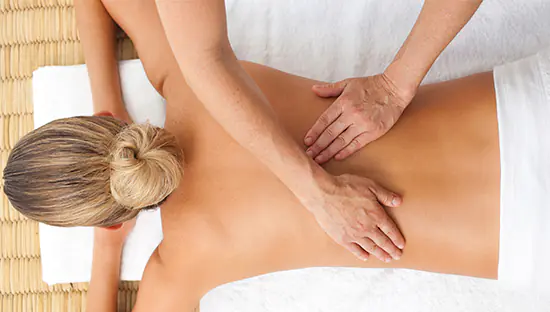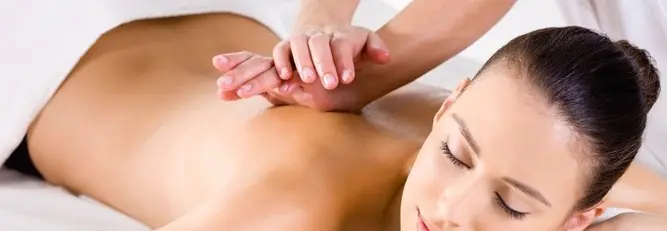Scoliosis is a disease that manifests itself as a pronounced scoliotic deformity of the spine. Treatment of this disease is carried out comprehensively. What is included in the complex: massage for scoliosis, therapeutic exercises, electrical stimulation and gentle motor mode, which provides relief from stress. Medicines and diet are selected individually.
With this disease, the normal functioning of internal organs, as well as their location, is disrupted. In particular, the cardiovascular and respiratory systems are susceptible to changes. Scoliosis can be congenital or acquired.

Deformity is significantly corrected
Massage technique for scoliosis
This procedure is used as one component of the entire treatment complex. Massage has a general strengthening effect on the body, strengthening muscles and the muscular corset.
Principles:
Impact on the back muscles: tense muscles on the side of the concavity of the spinal curvature are first stretched and then relaxed. On the side of the convexity, toning movements are performed on the stretched muscles.
The effect is applied to the shortened and stretched muscles of the chest, abdomen, and limbs.
The patient is identified with painful areas, compactions, and nodules in the tissues. These formations are affected by acupressure.
For each patient, the procedure and techniques are selected individually. At the same time, the massage therapist must have a good knowledge of the massage technique and the process in order to ensure complete treatment of the disease. Repetitive, stereotypical procedures are not enough here.
At the first stage of treatment, superficial tissue kneading is performed. It is used to increase the overall tone of the body and activate processes in the body. To eliminate muscle changes and hypertonicity, a gentle muscle massage is performed.
The superficial and gentle technique is followed by the stage of deformity correction. At this stage, deeper, longer and more intense techniques are performed. They are used to stretch shortened muscles, shorten stretched ones, and increase overall tone. As a rule, this technique is performed on the muscles of the chest, abdomen, limbs, and neck.
Of the huge number of different techniques, the most economical and effective techniques are performed. The table and the height of the table must be adjusted in such a way that the specialist can move around comfortably and use all the strength of his body when working.
One of the most common forms of scoliosis is thoracic scoliosis with the direction of the convexity of the thoracic arch to the right, and the lumbar curve to the left.

Only effective and economical techniques are performed
The patient should lie on his stomach, place his arms along the body, and turn his head to the side, and in the direction opposite to the scoliotic deformity. To make the procedure more effective, a massage roller is placed under the ankle joints.
The massage therapist begins his movements with longitudinal, rhythmic strokes on both sides of the back, along the entire spine. After performing several superficial strokes, deeper strokes are performed. Planar and grasping movements are used.
After stroking with the palm, the massage therapist begins to rub with the edge of the palm. The friction is a deep, long movement along the spine. The pace is accelerated, movements are performed in 1.5 seconds. one by one. On each side, you need to perform 12 such movements (in the area of the bony protrusions, the movements are performed more gently and pressure is unacceptable).
After performing friction with the rib, the subcutaneous folds are captured. This is done with the heel of the right palm and the edge of the left palm. Circular movements, rubbing between the palms and kneading the underlying muscles are possible. All movements are performed at a smooth but rhythmic pace. You can start performing movements from both the lumbar and upper thoracic spine. After each technique performed, light longitudinal stroking is performed.
After performing these techniques, the patient should feel warmth and slight flushing of the skin. During the procedure, asymmetry in the tone of the upper muscles may be revealed. In this case, gentle stroking of the shortened, tense muscle is performed, and the relaxed muscle is kneaded by sharp pressure and pinching.
If laxity of the gluteal muscles is detected, deep kneading, rubbing and stroking of this area is performed.
The massage therapist moves on to the next technique. To perform it, the patient is placed on his right side facing the massage therapist. A pillow is placed under the chest. Using the entire body weight, the specialist begins to pull the muscle away from the spine with rhythmic movements, smoothly moving to the upper lumbar region.
Next, using the base of the palm, knead the left extensor muscle of the back with sharp, rhythmic pushes. Without changing the position of the body, the pectoralis major muscle is stretched.
Then the patient should lie on the other side, the massage roller is placed under the lower back, the left arm should be extended forward. The massage therapist begins to perform stretching kneading of the left extensor of the back. Movements at the thoracic level are performed in the same way as at the lumbar level. Next, the right extensor of the back is massaged, and sharp, jerky movements are performed at the level of the thoracic region.
Depending on the physical condition of the patient and the degree of his general condition, the intensity of the appointments is selected. The patient should not feel pain. Bruising is unacceptable.

All techniques are selected depending on the general condition of the patient
Features of exercise therapy for scoliosis
In addition to massage, other procedures are performed, one of which is called exercise therapy. Depending on the degree of the disease, one or another set of physical exercises is selected. These can be breathing exercises, walking, swimming, general developmental exercises. Stretching exercises are also performed with a gymnastic stick. At the end of the class, balance exercises are performed. Particular attention is paid to the muscles of the back and abdominals, as well as the muscles of the gluteal region, the rectus abdominis and oblique muscles. In addition to the main ones, special symmetrical and asymmetrical movements are performed.
Approximate symmetrical movements
- The exercises are performed lying on your stomach. The patient should clench his hands into a fist and alternately extend them forward.
- Next, the arms are extended to the sides, and with smooth rhythmic movements the arms are lowered and raised.
- Then the arms are extended forward again. Like a swimmer, the arms are slowly brought back toward the hips.
- The patient lies on his back. Your arms need to be bent at the elbows and rest on them. You need to raise your shoulder blades slightly above the floor and perform slow nodding movements, as if you were holding the reins.
All movements are performed at a smooth pace without large amplitude. It will be enough to do the exercises 2 times a day for 20-30 minutes. The patient is contraindicated from jumping, carrying heavy objects, and performing significant bends forward. You need to sleep on a hard, flat surface.
Thanks to massage, a set of physical exercises and many other procedures, a significant correction of the existing deformity can be achieved. But, you need to understand and explain to the patient that this is just the first stage on the path to recovery. Treatment should be long-term.



